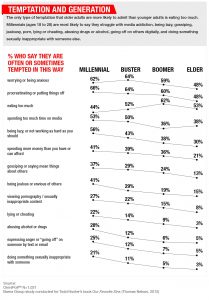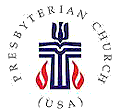It started in middle school. About this time every year, just after the school year began, so did our soccer season. But there were a few weeks before coaches could technically lead practices, so in my school, the middle and high school teams combined and were led in “training and conditioning” afternoons. After school we would gather outside of the locker room and the senior team captains would announce the plans for the day. Almost always we began with a long run through the school’s neighborhood. It was southern Alabama. In August. Hot. Humid. You get the idea. Miserable. And few of us had done much running over the summer, so it was pretty brutal. As some of you know, I’m not a runner. I’ve heard of this so-called “runner’s euphoria” that people exhibit after running a few miles and getting into “the zone,” but it has not been my experience. Instead, sheer survival has been my approach. I survived those soccer conditioning days with grit and clinging to the idea of focusing on what was ahead. Quite literally. An older player taught me that, instead of looking down the loooong stretch of road we had to cover (and then come back), to just look a few feet in front of me at a time. Then, to look at the light poles, and focus on running just to the next pole. One foot in front of the other, one step at a time, one light pole to the next. That’s what it takes to finish the race set before you; knowing where to look.
I wonder if the writer of Hebrews would give similar advice. This general epistle is written to an early group of believers who are, well, struggling with the process of getting in shape to follow a new faith system. They need a pep talk. As John Shelley describes it:
The writer of Hebrews has introduced the idea of faith as the courage to endure, in an effort to stiffen the spines of the little band of Christians struggling with hostility, ridicule, and shame[i].
Throughout chapter 11, he gives a long litany of heroes and heroines from the Hebrew Scriptures. This is a famous listing of names, from Abraham and Moses to the names we read this morning. It’s like a “who’s who” of the earliest parts of Scripture, no doubt names and stories familiar to this letter’s readers. It is a Cliff’s notes version, summarizing thousands of years of history into a few phrases each time, as if to jog the memory of those who know the fuller story. Together, they make up this amazing cloud of witnesses.
You know that long road I mentioned? It had a dead end. That meant that we ran to its end, then reversed the path to get back to our school campus. If you were in the back of the group, you would see others coming your direction, meaning that turn was near. But more encouraging than this, was the regular practice of high-fives from those leading the way, and the shouts of encouragement that we could pick up the pace. That’s the kind of work that the cloud of witnesses do for us in faith; this listing is one high five after another from those who have walked the road of life before us in faith, giving us confidence to do the same.
To those new to the faith, the writer points out “hey, look! Here’s a whole host of people who have come before you, who have had tremendous obstacles and challenges, too, and by faith, have made it through. If they can do it, so can you!”
What has helped God’s people deal with discouragement since the beginning is the knowledge that we are not alone. We follow in the footsteps of people from the earliest biblical times who were unsure of what the future held for them. We follow in the footsteps of saints who along the way chose to trust God anyway. We follow at God who does not abandon us in times of trouble[ii].
The penultimate example of this of course? Jesus Christ. He is the “pioneer and perfecter” of our faith, running the race before us, blazing the trail, and setting the pace and cadence. He is the experienced runner who jogs along beside us, effortlessly, with words of encouragement. He is the one who reminds us of the fundamentals: to breathe in through our nose and not our mouth, and what part of the foot to put on the ground first. And if we get distracted, or aren’t quite sure where the course lies, he provides direction and guidance, keeping our eyes focused on what is ahead – not too far, not too near. And, at the risk of ruining this metaphor, he’s probably also the water station and medic, ready with supplies in case of an emergency or injury or to scoop us up if the race becomes too much for us, and who stands cheering at the finish line saying “see! I know you could do it!” The idea of Jesus as the most elite athlete of faith and coach is not hard to wrap our minds around, and provides the kind of pep talk that we may need to keep going.
This morning at our 11:00 service we will/have baptize a wonderfully sweet child of God, Jackson. In this sacrament, we celebrate that Christ has won the race and is victorious over everything, even death. We affirm that we belong on God’s team, and that nothing can separate us from God’s love because of the one who claims us in these waters. We welcome those who are baptized into the family of God, and promise to be the cloud of witnesses for them. By faith, we affirm they belong to God. By faith, we promise to walk alongside them as parents, grandparents, aunts and uncles, cousins, friends, and the church universal, encouraging them to keep going in their journey of faith. We do all of this because, by faith, we believe in the power and example set in Jesus Christ, and look to him above everything else. Jesus Christ is that light pole to look toward, marking our lives step by step, moment by moment, with God’s grace. Baptism puts us on the starting blocks of our lives of faith, trusting Jesus to carry us from there.
What I love about the writer of Hebrew’s metaphor of the race in relation to faith in Christ is that it encompasses the fullness of the ups and downs of life. The writer reminds us that Jesus’ road was far from easy with the inclusion of the shame of the cross that he endured. But rather than dwell on the violence and the horrors of it, we are pointed to Jesus’ approach as one of focusing on the joy at the end. It seems that finding a focal point ahead is the key to enduring challenges along the way. Mary Foskett writes:
Life is difficult and the Christian life is no exception. In fact, discipleship will likely entail new challenges and unanticipated costs. The key for the author of the letter to the Hebrews is that faith discerns where real life is to be found, knows which values are true and which are counterfeit, and endures hardship in the face of divine promise[iii].
Our text for today focuses our lives again on being faithful to a God who is faithful to us. With Christ as our focal point, we are able to put one foot in front of the other and continue on the race, even if we are moving slower than a turtle through peanut butter. Everything comes into perspective.
Faith allows [us] to see beyond what is right in front of [us], [our]daily problems, to see what God is doing in [our] midst, to see what God has done throughout the ages, and to see the future joy God has in store for us[iv].
There’s an old spiritual that captures this truth. It begins “In the morning, when I rise” which leads to the ask, “give me Jesus.” But it doesn’t end there. The verses continue “and when I feel alone”; and “when I come to die.” In all of these, and presumably everything in between, the singer reflects a deep longing for the one who will bring us life. All along the way, one post at a time, we need Jesus. When things are new and fresh like a morning, and our lives seem brimming with potential and excitement for what might be, in hope we need Jesus. When things are isolating and challenging, and our cries seem to echo around us without response, in pain we need Jesus. When things come to an end and we feel all of those mixed emotions, in grief and in peace we need Jesus.
That is the heart of the Hebrews message – to look to Jesus in all times, especially when the road gets long, for it is our faith in him that will lead us forward and give us the courage to just take one. more. step. The road is laid out before us. A cloud of witnesses is cheering us on. May we have the faith to look to Christ and run in his direction. Amen.
~Sermon by Rev. Elizabeth Lovell Milford, August 18, 2019
___________________________________________________________________________________________________________________
[i] John C. Shelley, “Theological Perspective: Hebrews 11:29-2:2,” Feasting on the Word, Year C, Volume 3, David L. Bartlett and Barbara Brown Taylor, editors (Louisville, KY: Westminster John Knox Press, 2010).
[ii] David E. Gray, “Pastoral Perspective: Hebrews 11:29-2:2,” Feasting on the Word, Year C, Volume 3, David L. Bartlett and Barbara Brown Taylor, editors (Louisville, KY: Westminster John Knox Press, 2010).
[iii] https://www.workingpreacher.org/preaching.aspx?commentary_id=4153
[iv] David E. Gray, “Pastoral Perspective: Hebrews 11:29-2:2,” Feasting on the Word, Year C, Volume 3, David L. Bartlett and Barbara Brown Taylor, editors (Louisville, KY: Westminster John Knox Press, 2010).


